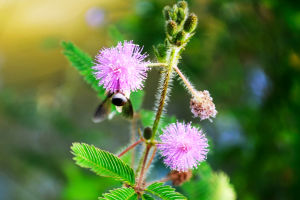As winter slowly gives way to spring, we are welcomed by the delicate yet vibrant Hepatica flowers. These perennial plants emerge from the soil with colors ranging from soft pink, deep purple, gentle blue, to pure white.
Each bloom grows individually on a slender stem, standing tall above the winter-worn ground. Seeing them, we can’t help but pause and admire how such small plants bring so much life and color to the early spring landscape.
Their presence signals the season’s renewal and reminds us to appreciate the quiet wonders around us.
Unique Flower Structure
Hepatica flowers are more than just pretty—they are ingeniously designed to thrive. Each flower has three small green sepals beneath its colorful petals, forming a subtle contrast that makes the bloom even more eye-catching. This design not only adds visual appeal but also plays a vital role in attracting pollinators. Observing this, we see how nature balances beauty and function, giving every detail a purpose that contributes to the plant’s survival. Even small traits, like the shape of the petals, are part of a larger ecological plan.
Pollinators’ Delight
One of the most fascinating aspects of Hepatica is its interaction with pollinators. Bees, butterflies, moths, flies, and beetles frequently visit these flowers, transferring pollen as they feed. Watching them, we realize that Hepatica is an important player in its ecosystem. Each visit ensures that new blooms will appear next season. For us, seeing this process firsthand highlights the interconnectedness of life. Even the smallest flowers can have a big role in supporting insects and maintaining ecological balance.
Leaf Life and Winter Survival
Unlike many flowers that produce fragile leaves, Hepatica grows a set of basal leaves that are thick, leathery, and three-lobed. These leaves can survive harsh winters and allow the plant to start photosynthesizing early in spring. We notice how this adaptation helps Hepatica maximize energy and remain resilient despite the cold months. For gardeners and nature lovers, it’s inspiring to see a plant that quietly persists through the toughest conditions, teaching us patience and the importance of careful preparation.
Native Roots and Diversity
Hepatica is native to central and northern Europe, parts of Asia, and eastern North America. This wide range contributes to its diversity in color and bloom patterns. Depending on the region, we might notice slight variations in petal shape, hue, or leaf texture. Regardless of these differences, the essence of Hepatica remains the same—a cheerful bloom that heralds spring. For us, this shows how a single species can adapt across continents while keeping its core charm intact, giving nature enthusiasts plenty to explore and appreciate.
Planting Tips for Enthusiasts
If we want to enjoy Hepatica at home, a few careful steps can make a big difference. Choose well-drained soil with partial shade to mimic their natural woodland environment. Avoid disturbing the roots, as Hepatica thrives on stability. Water moderately during dry periods and let fallen leaves act as a natural mulch to protect the plant. With these simple tips, we can grow Hepatica successfully and enjoy its blooms year after year. Observing their growth also teaches us to notice subtle changes in the garden and appreciate the small wonders around us.
Spotting Hepatica in the Wild
For those who love nature walks, Hepatica can be spotted in wooded areas or along forest edges. We can look for them on gentle slopes where the soil is rich but well-drained. The first blooms often appear from late winter to early spring, making them one of the earliest signs of life after winter. Bringing a camera or a small notebook allows us to track their growth, colors, and the insects that visit them. Experiencing Hepatica in the wild deepens our connection to nature and makes every spring walk more memorable.
Enjoying Hepatica’s Magic
Lykkers, Hepatica is more than a simple flower—it symbolizes resilience, patience, and the quiet beauty of early spring. From their colorful petals to their hardy leaves and essential role in supporting pollinators, these flowers remind us to notice the little wonders around us. Seeing them bloom in the wild or nurturing them in our gardens encourages us to slow down, observe closely, and connect with the natural world. By appreciating these small, resilient blooms, we can carry a sense of joy and inspiration with us long after the season has passed.
Hepatica americana Round-lobed Liverleaf
Video by QuipTV


